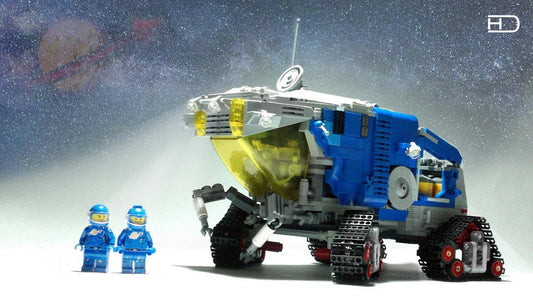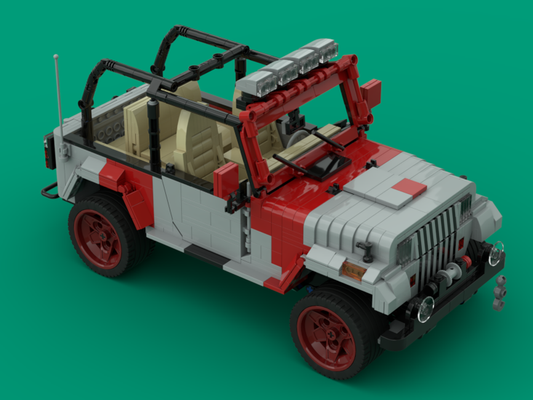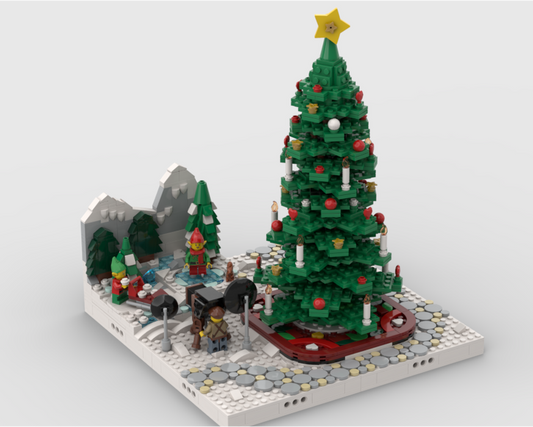
Tips for Building Different Types of LEGO Trees
Share
Tips for Building Different Types of LEGO Trees
Building trees from LEGO is a great way to add natural detail to your creations, whether you're constructing a bustling city park, an ancient forest, or a cozy backyard scene. Trees come in many shapes and sizes, and using LEGO bricks to mimic these organic forms can be both fun and challenging. In this guide, we'll provide tips on building various types of trees, while keeping your designs simple yet realistic.
- Understanding Tree Structures
Before diving into building different types of trees, it's helpful to understand a few key components that all trees have in common:
- Trunk: The central support structure of the tree, usually in brown or grey.
- Branches: These extend from the trunk to hold the leaves or needles.
- Leaves/Canopy: This is the green (or seasonally different) top portion of the tree.
- Roots or Base: The area around the bottom of the trunk, sometimes visible.
By thinking in these basic terms, you can apply different building techniques to create various types of trees.
- General Tips for Building LEGO Trees
Here are some tips that can apply to nearly any type of tree build:
- Use a variety of pieces to mimic the irregular, organic look of trees. Instead of using only regular bricks, include slopes, arches, and round plates for texture.
- Mix colors to add realism. Trees aren't always one uniform shade of green or brown. Experiment with different hues, like olive green, dark green, or even autumn shades like yellow and orange.
- Consider scale based on your build. A small park might need shorter, simple trees, while a forest scene could benefit from taller, more detailed models.
- Use hinges or ball joints for branches to make the tree look more natural and flowing rather than blocky and rigid.
- Types of LEGO Trees and How to Build Them
These trees are perfect for small LEGO scenes like city parks or countryside builds. They're simple, quick to make, and use fewer pieces.
Tips:
- Thin round bricks or cones make great tree trunks.
- Stack leaf elements or flower pieces to create a basic canopy.
- You can use clips to attach smaller branches at angles for variety.

Evergreens, like pine trees, have a distinct triangular shape and are great for snowy or forest scenes.
Tips:
- Use slope pieces to create the layered, conical shape of an evergreen. Stack progressively smaller slopes as you go up.
- Try adding plate with clip elements as branches and attach dark green leaf pieces to mimic needles.
- For extra detail, add small snow-covered sections using white plates or studs during winter scenes.

C) Deciduous Trees
Deciduous trees have wide, spreading canopies and are great for landscapes that change with the seasons.
Tips:
- Use brown rods, Technic pins, or round bricks to create irregularly shaped trunks.
- Create branches by attaching leaf elements at various angles. The canopy should look full, so layer leaves to give the illusion of depth.
- For autumn scenes, mix in orange, yellow, and red leaves.

Palm trees are an iconic element in beach or desert builds, with tall, narrow trunks and fan-like leaves.
Tips:
- Use round bricks stacked on top of each other for a tall, narrow trunk.
- Attach large curved leaf elements or even flexible vine pieces to represent the fronds of the tree.
- For extra flair, you can add coconuts by placing brown studs underneath the leaves.

For more imaginative builds, you might want to create trees with unusual colors or exaggerated forms. This is perfect for fantasy landscapes or alien worlds.
Tips:
- Use vibrant colors like purple, blue, or even pink to build magical trees.
- You can combine parts of crystal pieces, flowers, or even transparent elements to create a unique canopy.
- Vary the shape of the tree trunk with unusual textures using rock-like or branching pieces for an exotic effect.

- Advanced Techniques for Realistic Trees
If you're looking to take your tree-building skills to the next level, here are some advanced techniques:
- Modular Branches: Build individual branches separately and connect them to the trunk using Technic pins or ball joints. This allows for more dynamic and flexible tree shapes.
- Root Systems: For added realism, build visible tree roots by using slope pieces or arches at the base. This is especially effective in forest scenes or dioramas with uneven terrain.
- Textured Trunks: Instead of using basic round or square bricks, use a combination of slopes, tiles, and even rock-like pieces to create bark textures. Mixing browns and greys can add an aged look to the tree.
- Seasonal Variations: Build swappable leaves or canopy sections so you can easily switch between green summer foliage and red, yellow, and orange autumn tones.
- Using Trees in Your LEGO Creations
Trees can serve different purposes in LEGO builds:
- Setting the Scene: Trees help establish a setting, whether it's a suburban neighborhood, an enchanted forest, or a tropical island.
- Focal Points: A well-detailed tree can be the centerpiece of a landscape. Consider building one large tree to anchor your scene.
- Adding Layers and Depth: By placing trees in the background, middle ground, and foreground, you can add depth to your build. Use different heights and shapes to make the scene look more natural.

Conclusion:
LEGO trees are a wonderful way to add life to your builds. Whether you're building a simple tree for a small park or a detailed fantasy forest, using the right techniques and variety of pieces can help make your trees stand out. From basic evergreens to exotic fantasy trees, the possibilities are endless!
Happy building!





